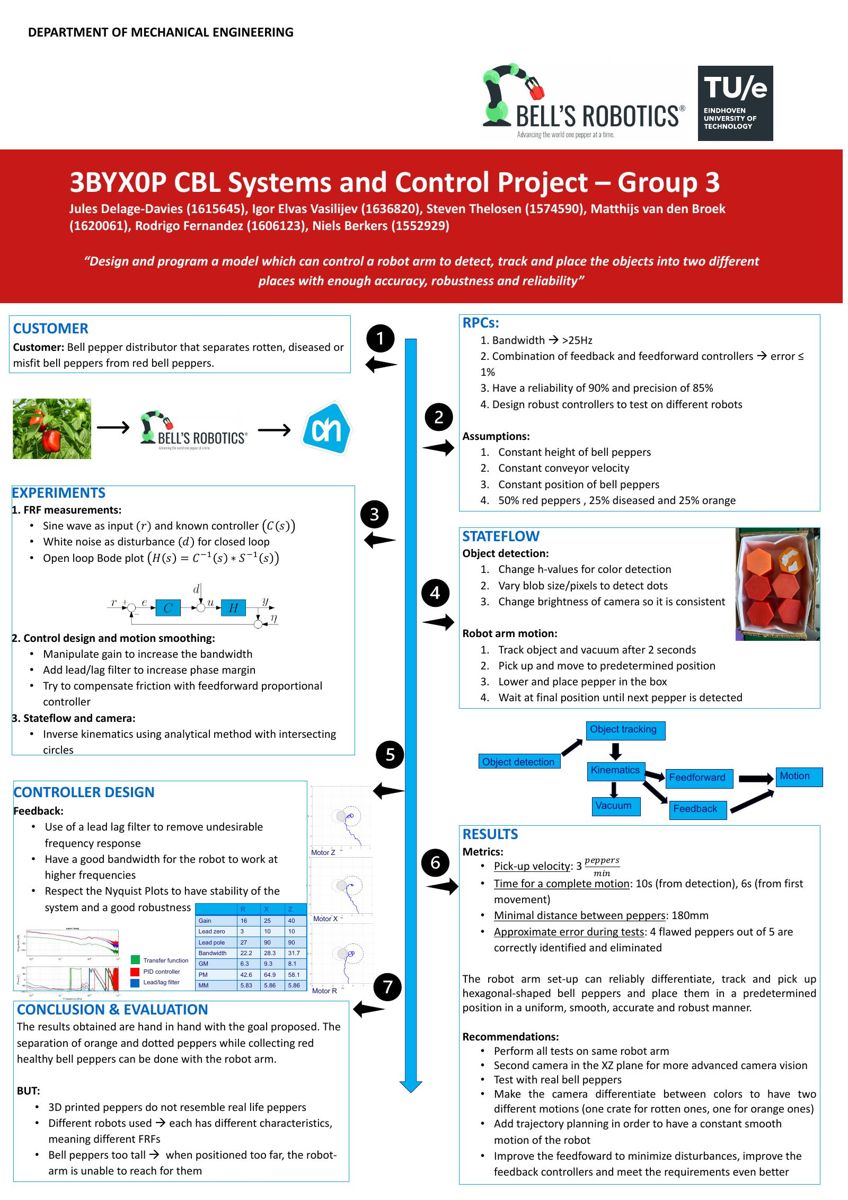by Canan Mesutoglu, Dury Bayram-Jacobs, Annemieke Vennix and Jan van der Veen
Background to the Project
The collaborative project of the departments Applied Physics (AP) and Mechanical Engineering (ME) entitled: ‘3BYX0P – Challenge Based Learning (CBL) Systems and Control’ had been granted for 2021-2022. In this project, AP and ME, collaborated to do the first piloting of a joint CBL course: ‘3BYX0P-CBL Systems and Control Project’. Empirical findings from its accompanying research project: ‘Deepening Multidisciplinarity within Systems and Control’ carried out by Eindhoven School of Education, together with the experiences of the teachers and the tutors led to the improvement of the course. In its second pilot, the teacher team worked on modifying the course considering, for example, a challenge that draws on more from AP expertise, keeping the presentations that students make during their team meetings, attracting more AP students to the course. In the second year of the project (2022-2023), the researchers of Eindhoven School of Education (Canan Mesutoglu, Dury Bayram-Jacobs, Annemieke Vennix, and Jan van der Veen) carried out research in the context of this revised CBL course, delivered in Q4 2022.
Summary of the Second Year Results
Having students work on problems in multidisciplinary teams is an increasing practice in CBL course contexts. Although ample number of projects exist in the context of CBL courses at TU/e, the course ‘3BYX0P - The CBL Systems and Control Project’ is among the few CBL courses developed in collaboration with at least two different departments. Building on first year findings, the second year of the project continued with exploration of multidisciplinary teamwork. More specifically, the project in its second year, took a closer look at the interactions between the disciplinary boundaries of AP and ME during student teamwork. Because boundary interactions create unique learning opportunities, it is worthwhile to understand the issues: what AP and ME knowledge and practices are bridged, to what extent, and what practices bring them together while creating a constructive tension. The close inspection of the boundary processes was performed through collecting data from multiple sources; interviews with students of the two multidisciplinary teams, observations of team meetings, and reflective student journals.
First results indicate that the main disciplinary expertise of AP and ME interacted and connected respectively were: ‘organization and project planning skills’ and ‘communication and teamwork skills, experience in theory and applications of control’. Students engaged in the following practices during teamwork to get the added value of both disciplines in their problem solution: ‘creating mini-teams of AP and ME students around identified tasks, organizing multidisciplinary group discussions, and explaining the perspective of one’s own discipline’. Moments of generative tension in the context of mini-teams and group discussions were identified.
It is found very positive that the students of both teams were responsive to the expertise of AP and ME disciplinary communities, and they were able to reflect this expertise in construction of their solutions. It appears that students tried to first understand each other’s’ disciplinary expertise and strengths. This was followed by making use of expertise to get the necessary benefit from both disciplines in the project. Part of the data is still analyzed to gain a more in-depth understanding. The findings can provide useful insights into designing similar multidisciplinary courses for science and engineering students to foster deep learning in teams.
Overview of Dissemination
Results of the first and the second year of the project have been presented in multiple conferences. More details and current updates can be followed on the Innovation map page of the project.
Posters
- student group 1 [pdf]

- student group 3 [pdf]




